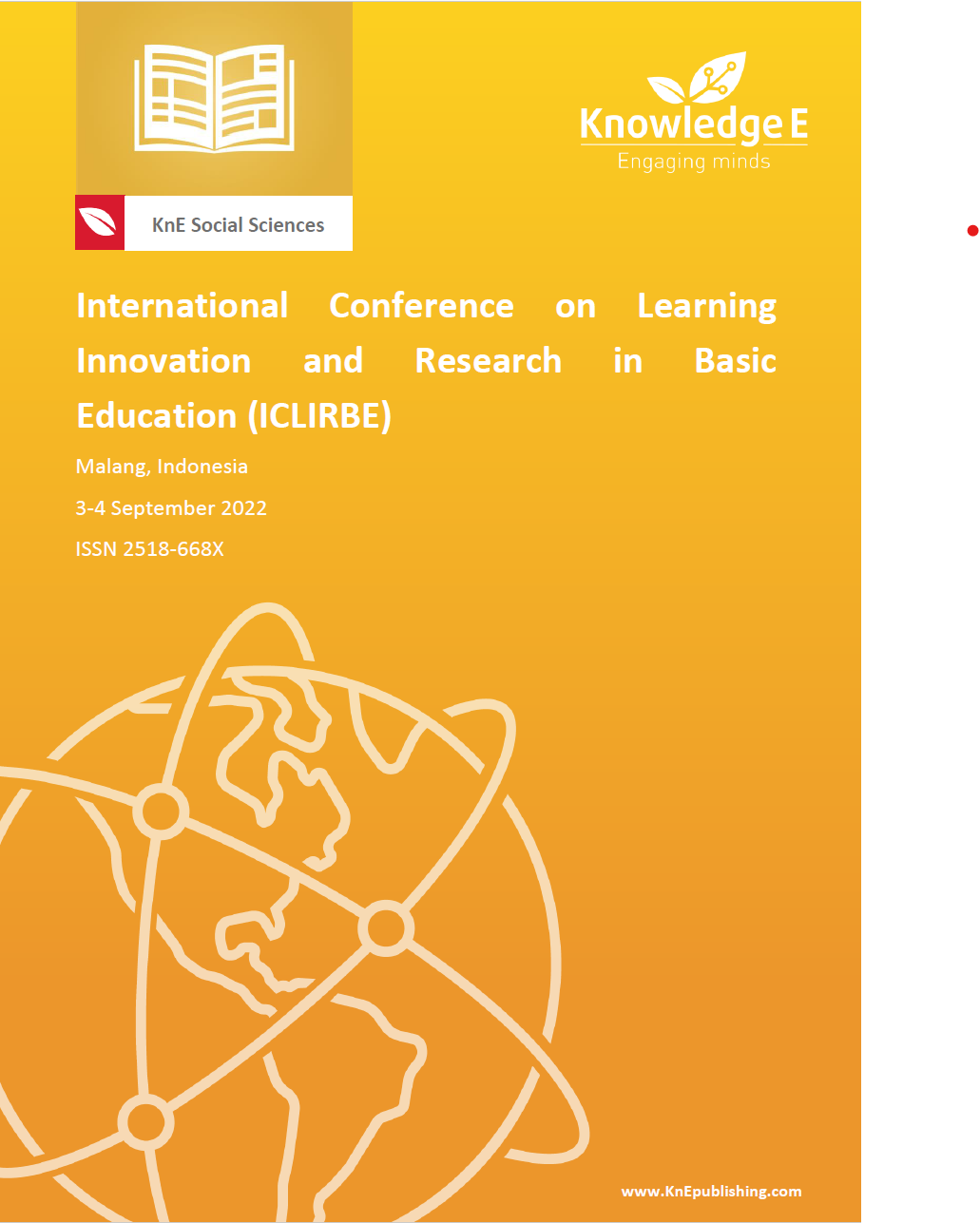Duolingo Application in English Teaching Practice: Teacher’s Perception
DOI:
https://doi.org/10.18502/kss.v8i8.13289Abstract
Unique learning media will produce good learning. Unique in this case means a teacher who creates a fun and innovative learning atmosphere. So that the process of learning English in class inspires them to keep going. Duolingo is a gamified software for language learning. The heavy-duty of this popular language learning software, incentive benefits, logical levels, and user ratings based on success are just a few examples of aspects that demonstrate the strong elements of gamification. As an outcome, a teacher must utilize creative and innovative learning media. Many English teachers struggle with designing and implementing English learning media that piques students’ interest in learning English. As a result, the research focuses on introducing and developing the effectiveness of using duolingo application in English learning for students. This research utilizes a qualitative descriptive design to evaluate how English teachers perceive the Duolingo application in learning English in the classroom. The participants in this study were 15 English teachers from various schools in Medan City. The finding showed that the teacher’s perception of the Duolingo application was very influential and effective while using in the classroom to learn English.
Keywords: duolingo, teacher’s perception, English learning
References
[2] Ajisoko P. The use of Duolingo apps to improve English vocabulary learning. Int J Emerg Technol Learn. 2020;15(07):149–155. doi:10.3991/ijet.v15i07.13229
[3] Akbari Z. Current challenges in teaching/learning English for EFL learners: The case of junior high school and high school. Procedia - Soc Behav Sci. 2015;199:394–401. doi:10.1016/j.sbspro.2015.07.524
[4] Bacca J, Baldiris S, Fabregat R, Graf S, Kinshuk. Augmented reality trends in education: A systematic review of research and applications. J Educ Technol Soc. 2014;17(4):133–149. http://www.jstor.org/stable/jeductechsoci.17.4.133
[5] Castañeda DA, Cho MH. Use of a game-like application on a mobile device to improve accuracy in conjugating Spanish verbs. Comput Assist Lang Learn. 2016;29(7):1195–1204. doi:10.1080/09588221.2016.1197950
[6] Dehganzadeh H, Dehganzadeh H. Investigating effects of digital gamification-based language learning: A systematic review. J Eng Lang Teach Learn. 12(25):53–93.
[7] Duolingo. About us: Mission. 2021. Retrieved from https://www.duolingo.com/info
[8] Duolingo. About us: Approach. 2021. Retrieved from https://www.duolingo.com/approac
[9] Duolingo Help Center. What is Duolingo? 2020. https://support.duolingo.com/hc/enus/ articles/204829090-What-is-Duolingo-
[10] Eisenlauer V. Multimodality in mobile-assisted language learning. Commun Comput Inf Sci. 2014;479:328–338. doi:10.1007/978-3-319-13416-1_32
[11] Fadhli M, Sukirman S, Ulfa S, Susanto H, Syam AR. Gamifying children’s linguistic intelligence with the Duolingo app: A case study from Indonesia. In Papadakis S, Kalogiannakis M, editors. Mobile learning applications in early childhood education. Hershey, PA: IGI Global; 2020. p. 122–135. doi:10.4018/978-1-7998-1486- 3.ch007
[12] Huang WHY, Soman D. Gamification of education. Report Series: Behavioural Economics in Action. 2013;1–29.
[13] Hwang WY, Chen CY, Chen HS. Facilitating EFL writing of elementary school students in familiar situated contexts with mobile devices. In 10th 31 World Conference on Mobile and Contextual Learning, 18-21, October 2011, Beijing, China: MLearn2011 Conference Proceedings. 2011, October. 15–23.
[14] Kondo M, Ishikawa Y, Smith C, Sakamoto K, Shimomura H, Wada N. Mobile assisted language learning in university EFL courses in Japan: Developing attitudes and skills for self-regulated learning. ReCALL. 2012;24(2):169–187. doi:10.1017/ S0958344012000055
[15] Lotze N. Duolingo: Motivating students via m?homework. TESOL J. 2019;11(1):1–3. doi:10.1002/tesj.459
[16] Luke JY, Wiharja CK, Sidupa C. The effectiveness level and positive values of practicing translation using mobile app DUOLINGO for Indonesian freshmen students. In Proceedings of the 2nd International Conference on E-Society, EEducation and E-Technology. 2018;26–29. doi:10.1145/3268808.3268834
[17] Macalister J. Language learning principles and MALL: Reflections of an adult learner. TESOLANZ J. 2017;25:12–24. https://doi.org/10.1177% 2F0033688218771385.
[18] Marques-Schafer G, da Silva Orlando AA. Languages learning conceptions and Duolingo: A critical analysis on its proposals and learners experiences. Texto Livre - Linguagem e Tecnologia. 2018;11(3):228–251.
[19] Munday P. The case for using DUOLINGO as part of the language classroom experience. RIED. Revista Iberoamericana de Educación a Distancia. 2016;19(1):83– 101. doi:10.5944/ried.19.1.14581
[20] Notaro GM, Diamond SG. Development and demonstration of an integrated EEG, eye-tracking, and behavioral data acquisition system to assess online learning. In Proceedings of the 10th International Conference on Education Technology and Computers. 2018. p. 105–111. doi:10.1145/3290511.3290526
[21] Oktaviani A, Fauzan A. Teachers perceptions about the importance of english for young learners. Linguist Eng Educ Art (LEEA) J. 2017;1(1):1-15.
[22] Pramesti AS. Students’ perception of the use of mobile application Duolingo for learning English. Int J Sci Technol Res. 2020;9(1):1800–1804. Retrieved from http://www.ijstr.org/final-print/jan2020/Students-Perceptio n-Of-The-Use-Of-Mobile- Application-Duolingo-For-Learning-English.pdf
[23] Rafek MB, Ramli NHLB, Iksan HB, Harith NM, Abas AIBC. Gender and language: Communication apprehension in second language learning. Procedia - Social and Behavioral Sciences. 2014;123:90–96. doi:10.1016/j.sbspro.2014.01.1
[24] Research – Duolingo. (n.d). Research - Duolingo. Retrieved from https://research.duolingo.com/
[25] Rolando APP, Gabriela REA, Carolina MSE, Antonio ARM. Incidencia de Duolingo en el desarrollo de las habilidades comunicacionales verbales del idioma ingles a nivel de educación superior. Eur Sci J (ESJ). 2019;15(16):29–44. doi:10.19044/esj.2019.v15n16p29
[26] Teske K. Duolingo. CALICO J. 34(3):393–401. doi:10.1558/cj.32509
[27] Toland SH, Mills DJ, Kohyama M. Enhancing Japanese university students’ English-language presentation skills with mobile-video recordings. JALT CALL J 2016;12(3):179–201. doi:10.29140/jaltcall.v12n3.207
[28] Vehovar V, Toepoel V, Steinmetz S. Non-probability sampling. In: Wolf C, Joye D, Smith TW, Fu Y, editors. The Sage handbook of survey methods. Thousand Oaks, CA: Sage Publications; 2016. p. 329-345.
[29] Vygotsky LS. Thinking and speech. In Rieber RW, Carton AS, editors.The collected works of L. S. Vygotsky: Vol. 1. Problems of general psychology. New York, NY: Plenum Press; 1997. p. 39-285. doi:10.1007/978-1-4613-1655-8

